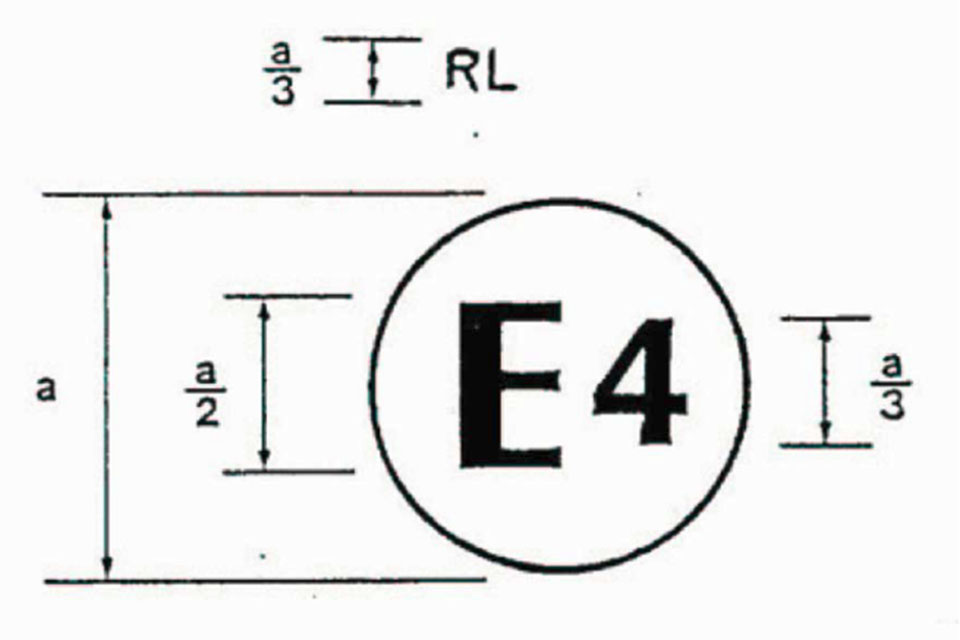Daytime running lights
Published 1 November 2010
Dedicated daytime running lights
Daytime running lights (DRL) are purpose-made, low-wattage lights that can be fitted to a vehicle and used during the day to improve the visibility of a vehicle to other drivers as well as pedestrians, cyclists and other road users. They do not need to be operated manually as they automatically activate when the engine is started and turn off when the engine stops or when headlights are switched on at night.
DRL are necessarily bright to ensure they are visible in the daytime but not so bright that they will dazzle others. However they are too bright for night time use and are not intended to illuminate the road in the dark. If used at night they will cause dazzle and discomfort to others and so drivers should always switch to their position lamps or headlamps at night.
Evidence
Research has shown that DRLs are likely to reduce multiple vehicle daytime accidents and fatalities by up to 6% once all vehicles are equipped. DRL are likely to result in a small increase in fuel consumption and CO² emissions of around 0.5% but this is expected to be lower when LEDs are used in place of filament light sources.
Legislation and requirements:
Vehicle manufacturers must fit DRL to new types of passenger car and light goods vehicle (car derived vans) type approved to European vehicle requirements from February 2011[footnote 1] . In practice this means that any new model launched after this date, and many launched before, will be fitted with DRL. However, existing models on sale before this date without DRL fitted can continue to be sold and used indefinitely.
Similar requirements apply to large vehicles (such as HGVs) and buses from 7 August 2012. Motorcycles do not currently require DRL to be fitted, but most manufacturers voluntarily opt for an AHO (Automatic Headlight On) system to be installed as an alternative. Changes to European legislation will, in future permit manufacturers to fit DRL on their motorcycles.
DRL activate automatically when the engine is started and remain on unless the headlamps are switched on. They may however remain off in some low speed and stationary situations. In general all other lights should remain off when the DRL are on but for a limited period some vehicles may be available which automatically activate the rear position lamps at the same time as the DRL.
DRL may be combined with other lamps. For example some manufacturers use the same lamp for both the DRL and position lamp. In these cases the DRL automatically dims to function as a lower intensity position lamp when the headlamps are turned on. DRL placed close to direction indicators may also automatically dim when the direction indicator is active. This is to ensure that the direction indicator is not masked by the light from the DRL.
Retro-fitting DRL
There is no requirement to retro-fit DRL on vehicles not fitted with them as standard. If you decide to retro-fit DRL you should ensure they have been approved to the correct European legislation. This can be confirmed by checking that the approval mark embossed on the lamp contains the letters “RL”, see figure 1.
Ideally retro-fitted DRL should be installed such that they activate automatically when the engine starts and switch off when headlamps are turned on. If this is not the case then you must ensure that you manually turn DRL off at night as they will cause dazzle and discomfort to others if used in low ambient lighting conditions.

Figure 1. Example of DRL approval mark
Use of other lamps during the daytime
Drivers of vehicles that are not fitted with DRL are not required to turn on their headlamps or position lamps during the day unless visibility is very poor. However some European member states do require some form of lighting during the day so if you travel abroad and do not have DRL fitted you may be obliged to drive with your headlamps on.
Legal information
This guidance is covered by the terms and conditions that apply to all GOV.UK content.
-
European Directive 76/656/EEC, as amended by 2008/89/EC, concerning the installation of lighting and light-signalling devices on motor vehicles and their trailers. ↩
